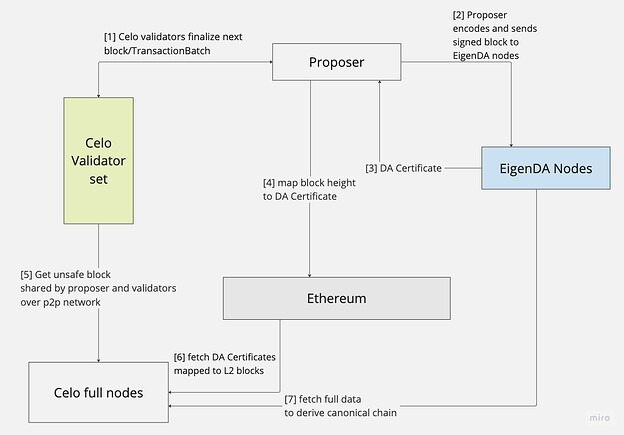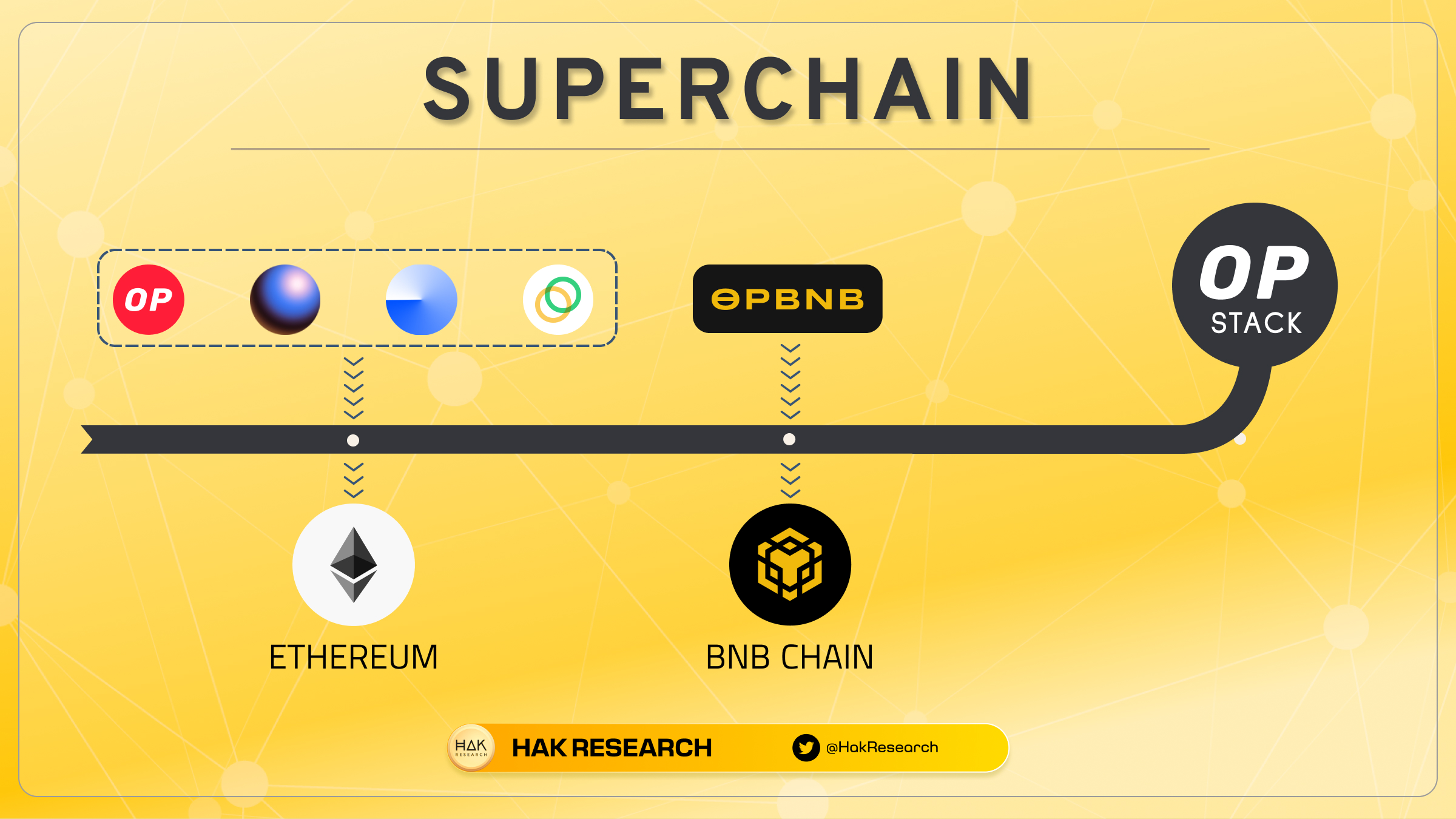Those of you who have been involved in the Crypto market for a long time are already familiar with the name Celo. A Layer 1 Blockchain project with the initial purpose of being an EVM compatible Blockchain for Mobile. But the development process faces many difficulties and fails to attract the community, and the ecosystem is underdeveloped.
Recently, on July 15, 2023, cLabs, the Celo development support fund, made a proposal to convert Celo into a Layer 2 Blockchain on Ethereum. So what is Celo Layer 2? What does this proposal mean? Let’s find out in this article!
To understand more about this article, you can read the following articles:
- What is EigenLayer? EigenLayer Cryptocurrency Overview
- What is Superchain? Overview of Optimism’s OP Stack, OP-Chain & Superchain
- Why Did Coinbase Build Base As A Layer 2
- What is Base? Base Cryptocurrency Overview
- What is opBNB? Binance Officially Joins Coinbase to Join Optimism’s Superchain
History Of Celo
Celo’s whitepaper was released in 2018, with a vision and mission no less than Ethereum. However, the development process encountered many technological problems, so the project shifted development to Blockchain POS specializing in Mobile.
This is a pretty good idea, attracting a very large customer base when the phone is something that almost everyone owns and always carries with them. So bringing dApps to phones for use is inevitable. But the first failure is that the market is not ready to receive it, the infrastructure for websites or computers has not yet been built and Blockchain has not been applied in much life.
In addition, as dApps and technology on computers develop, they can support additional App versions for phones, so in this aspect, it will also bring quite high competition in the future.
After encountering difficulties with Celo’s development at that time, the team continued to move towards Stablecoin development, especially focusing on the Carbon credit market and supporting Stablecoins for countries. But the next step will be defeated by CBDC.
And finally, now, the proposal to convert Celo into a Layer 2 Blockchain on Ethereum built using the OPstack toolkit. This means that Celo Layer 2 will use Optimistic Rollup technology and inherit security from Ethereum as well as connect to the entire Superchain ecosystem.
Overview of Proposal to Convert Celo to Layer 2
Proposal to convert Celo from a Layer 1 Blockchain using POS consensus mechanism to a Layer 2 on Ethereum with Optimistic Rollup technology. This proposal was released by cLabs, an organization supporting the development of Celo.
This proposal was posted on July 15, 2023, but with the purpose of allowing the community to discuss, contribute ideas and refine technologies for the development of Celo Layer 2. And this step is also quite good. The community actively supported it because Celo Layer 1 was too quiet and out of breath compared to its competitors.
Although with this proposal, Celo will become a Layer 2 on Ethereum, the CELO Token will still be used as network fees. In addition, CELO Tokens are used to vote for platform governance and Stake in Validators.
What is Celo Layer 2?
Celo is a Layer 2 on Ethereum built on top of Optimism’s OPstack toolkit. Celo can also be considered an OPchain in the Supperchain ecosystem. Celo will inherit security from the Ethereum platform and connect to other OPchains in the Supperchain.
Celo’s orientation is to upgrade to zkEVM technology after OPstack supports it. This helps Celo Layer 2 operate faster and more securely than Optimistic technology.
Validators of the Celo Blockchain network will transform into Sequencers to arrange transactions on Layer 2 Celo. These Sequencers still work like other Layer 2 Sequencers, arranging and synthesizing multiple transactions into batches, then creating evidence for the transaction batch and sending it to Layer 1 Ethereum. Transaction data on Layer 2 Celo will be stored in EigenLayer’s EigenDA.
The way data is stored on EigenDA is similar to Mantle Network, it helps reduce transaction fees on Celo’s Layer 2 platform significantly compared to Optimism or ZKsync. And with about 110 Validators participating in the data arrangement and validation process of Celo Layer 2, this can be considered the most decentralized layer.
CELO tokens will be used to calculate transaction fees on the Celo Layer 2 network, Stake in Validators and platform administration. Normally, the fees collected from users will be partly converted into ETH to pay Ethereum network fees, and partly to pay storage fees on EigenDA (paid in CELO).
Mechanism of Operation of Celo Layer 2

Transactions from dApps on L2 will be aggregated into batches by the Sequencer and put into 1 Block. Then sign and transmit this block to the Full Nodes P2P network for authentication or can be considered PBFT consensus, reaching 2/3 of the Nodes will be approved and send the signed TransactionBatch to the DA layer (EigenDA). Receive a DA certificate from the DA layer and post it to Ethereum.
Why Did Celo Choose To Be Layer 2 In Supperchain
Choosing the development direction of being a Layer 2 on Ethereum and becoming an OPchain is also very understandable because Ethereum is still a leading Smart Contract platform on the market. And the orientation of Supperchain is to create a network of interconnected Layer 2s. These Layer 2s are developed on arbitrary Layer 1s and use highly customized technology.

We can imagine that OPchains are also Layer 2 in Supperchain as Zones, and Ethereum is the largest central Hub, in addition other Blockchains such as BNB Chain or Bitcoin or Solana are smaller Hubs. The Hub and Zone that we are thinking about are the two main components in the structure of the Cosmos Network.
OPchain is painting a very bright future as well as the unlimited connection of Blockchains. And big guys have also participated in this network such as Base of Coinbase, opBNB of BNB Chain,… Through this we see the importance of Layer 2 and Supperchain.
Summary
The proposal to convert Celo Layer 1 to Layer 2 on Ethereum is a quite reasonable step, but accessing the Ethereum community and other networks through OPstack’s link is not enough to compete. The most important thing for a platform or an ecosystem is that in addition to technology, the projects on it must be great products that attract users in order to survive.
So I have introduced cLabs’ proposal and clarified what Celo Layer 2 is? Hope this article brings a lot of useful information and knowledge!


